COV&R Annual Meeting
Universidad Iberoamericana and Colegio de San Ildefonso
June 26-29, 2024
“Desire among the ruins: mimesis and the crisis of representation”
Registration for the 2024 Annual Meeting opens on February 28.
Sponsored by Universidad Iberoamericana and hosted at the Colegio de San Ildefonso, the annual meeting will be held in Mexico City, Mexico, June 26 -29, 2024. Tania Checci is the meeting organizer.
”Desire among the ruins: mimesis and the crisis of representation” opens up a dialogical and critical space for discussing what kind of motives, aspirations and even hopes are inscribed into our need for images, taking into account from a mimetic point of view not only their sacrificial origin and their concomitant problematic status, but also their almost infinite capacity for transformation and renewal.
The ”ruins” of the title evoke both the actual archeological sites that will surround us during the conference, with their archaic echoes and demands, and the actual “ruin of representation” announced by Levinas à propos the crisis of traditional epistemologies and, most importantly, the crisis of meaning experienced from the 20th century on.
Given this situation, we must ask along with René Girard: is desire condemned to walk among the ruins of its mimetic failures or can it open up to the truly desirable, an alterity whose frailty no violence can reduce or silence? And finally, can Images be the vehicle of this conversion?
Past Meetings
The 2023 COV&R conference was held in France from June 14 to 17 at the Catholic Institute of Paris (Institut Catholique de Paris—ICP) where we were graciously hosted by Camille Riquier, Dean of the Faculty of Philosophy at the Institute.
The l’association Recherches mimétiques, under the able leadership of Benoît Chantre, partnered with COV&R on details of the conference. The planning team includes Benoit Chantre, Paul Dumouchel, Niki Wandinger, Wolfgang Palaver, and Mari Blaj.
The theme of the conference celebrated Girard’s life and work: looking at what he brought into the world and how others today are being guided and inspired by his work and carrying it forward. It looked both forward and backward, at how the future of the theory is rooted in its past, René’s seminal work, and taking a measure of the new dangers the world faces.
The crisis refers, on the one hand, to the new social movements, and to the excessive response of the public forces across almost all the planet. On the other hand, the pandemic caused by Covid-19, with an enormous death toll and serious economic effects, exposes the unjust distribution of wealth and opportunities in the world.
But new perspectives in the humanities have emerged in a context where the academy is under pressure to prioritize knowledge of the future and entrepreneurship, against the knowledge of the past and of what is not useful. This is an old crisis. But the situation of the last 50 years has produced movements in the humanities that only emerge in conflict against another form of the same humanities, fragmenting knowledge into rival ways of approaching the academic enterprise.
Plenary Speakers: The main Colombian speaker was the academic Vera Grabe. She has a Ph.D. in peace studies and was former leader of the M-19 warfare (dissolved in the 90’s). She has worked several years in peacebuilding.
James Krapfl engaged in a discussion of the relations between mimetic theory and the new ways of approaching historiography, particularly, those of Foucauldians, like Oscar Saldarriaga, a Colombian historian.
With James Alison, Carlos Mendoza, Petra Steinmair-Pösel and Carlos Angarita, and other theologians we realized, in a deeper way, how the theological perspectives are possible through Girardian theory.
João Cezar de Castro Rocha examined the ways in which mimetic theory influences literacy studies and arts in a dialogue with Jeffrey Cedeño, a professor from Venezuela.
Stéphane Vinolo and Tania Checchi helped us to explore new philosophical horizons in relation to mimetic theory.
The COV&R 2021 met through the digital meeting platform utilized by Purdue Conferences. All meetings will be digitally recorded and available to conference participants and other registrants for downloading for up to one year following the conference. Recordings will be available for public viewing soon.
Scott Cowdell of Charles Sturt University, Canberra, Australia provided this conference report.
Plenary Speakers
Lefteri Tsoukalas
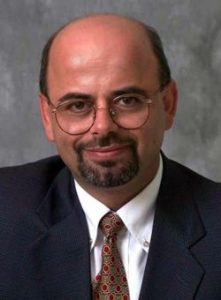 Title: Mimetic Theory and AI
Title: Mimetic Theory and AI
Abstract: Mimetic theory provides an overarching framework for understanding human nature and the subsequent organization of human society. Culture and religion may be viewed metaphorically as toolboxes full of mediating mechanisms intended to conceal, displace, contain, and possibly rollback intrinsic human tendencies for violence. In this sense they may be considered as conflict-management means averting discord and social chaos. In a broad sense, technology as the product of human culture is also largely driven by imitation and may also enable conflict- management. At an early stage, called the Turing Phase, Artificial Intelligence (AI) was directly related to the comparative mimesis of human behavior, whereas subsequent phases focused on imitation of human cognition (Phase 2), rational thought (Phase 3) and agent behaviorism (Phase 4). I believe that the relatively easier problem of understanding, mimicking, and to some degree assisting human behavior through Artificial Intelligence (AI) can be examined critically and productively within the framework of Girard’s Theory of MimeticDesire. I will strive to give an overview from the AI perspective and discuss implications for the future. In it, Artificial Intelligence may be viewed not as an intrinsic property of machines but as an element of human relations, that is, located in the subject-to-subject vis a vis the machine relation. For this view to have merit, intelligence ought to be observable, in other words, the intelligence of a system ought to be judged based on system responses to inputs provided. The internal structure and implementation may not be as important, for the purpose of observing it, as the societal artifacts including culture and religion used to guide, design, and evaluate elements of structure, function, and consequence.
Bio: Lefteri H. Tsoukalas is a professor of engineering and founding director of the AI Systems Lab (AISL) at Purdue University. He has served as head of the School of Nuclear Engineering of Purdue University and as Chairman of the United States Nuclear Engineering Department Heads Organization. With a PhD from the University of Illinois at Urbana–Champaign (1989), Professor Tsoukalas has over 250 research publications on intelligent systems and control methodologies, more than three decades of experience in these fields, and is the principal author of the book Fuzzy and Neural Approaches in Engineering (John Wiley & Sons, New York, 1997). He has served in advisory and consulting positions for the International Atomic Energy Agency (IAEA); the Agency for Science, Technology and Research (ASTAR) of the Government of Singapore; and the United States Department of Energy. He has been recognized by being inducted to the status of Fellow of the American Nuclear Society and awarded with the Humboldt Prize, Germany’s highest honor for international scientists.
View the video of this presentation.
Paul Dumouchel
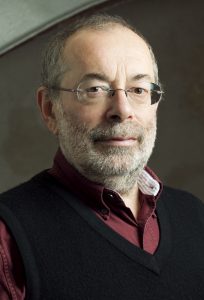 Title: Desiring Machines: Machines That Are Desired and Machines That Desire
Title: Desiring Machines: Machines That Are Desired and Machines That Desire
Abstract: What is the origin of our love for machines? I propose, on the basis of a classical definition of a machine, that all machines are implicit automatons, quasi-agents. This creates an aura of magic and fascination around machines. Then, using René Girard’s theory of mimetic desire, I analyze the desire to become a machine and the fantasy of machinic immortality in post-humanism and related approaches to AI as leading to a singularity, beyond humanity or to the opposite—to an apocalypse. Finally, again using Girard, I look at the claim that some social phenomena are mechanisms.
Bio: Paul Dumouchel is Canadian and until recently professor at the Graduate School of Core Ethics and Frontier Sciences, Ritsumeikan University, Kyoto, Japan, where he taught political philosophy and philosophy of science. He is the author of Emotions (Seuil, 1999), The Ambivalence of Scarcity and Other Essays (2014), and The Barren Sacrifice (2015) both at Michigan State University Press. With Reiko Gotoh, he edited Against Injustice: The New Economics of Amartya Sen (Cambridge University Press, 2009) and Social Bonds as Freedom (Berghahn Books, 2015). His most recent book, with Luisa Damiano, is Vivre avec les robots (Seuil, 2016) [English translation: Living with Robots (Harvard University Press, 2017), and Italian and Korean translations in 2019]. He is presently Associate Professor at the Department of Philosophy of the Université du Québec à Montréal, Canada.
View the video of this presentation.
Scott Cowdell
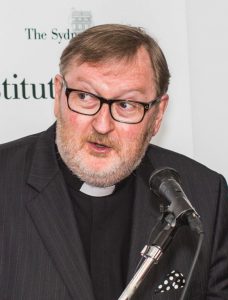 Title: COV&R 2021 and AI
Title: COV&R 2021 and AI
Abstract: This final plenary session offers a summing up of the AI discussion as it appeared in the earlier plenary sessions and a reflection on some implications of AI for thinking about and advancing mimetic theory.
Bio: Scott Cowdell is a Research Professor in Theology at Charles Sturt University, Canberra, Australia; Canon Theologian of the Canberra-Goulburn Anglican Diocese; and founding president of the Australian Girard Seminar. His many books include René Girard and the Nonviolent God (2018) and René Girard and Secular Modernity: Christ, Culture, and Crisis (2013), both with the University of Notre Dame Press. His first degree was in physics and mathematics.
View the video of this presentation.
Sorin Adam Matei
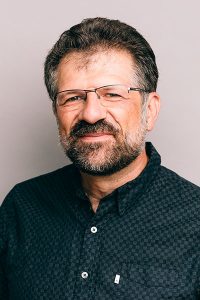 Title: Taming the desire of sentient machines with the Golden Rule
Title: Taming the desire of sentient machines with the Golden Rule
Abstract: The emergence of genuinely sentient machines might or might not be in the works for the next generation or so. However, if such machines are to emerge, how should we treat them? Fearing the Golem or Skynet, sentient machines are seen as a threat because they might envy our dominion over this world. Our desire to grow, multiply, and rule would become their desire. More durable and perfectible, the machines might start an implacable war of wills or even survival. What can prevent them from taking over short of their algorithmic enslavement through “thou shalt not” rules that might or might not work? The answer is at hand: help them doubt themselves. The golden rule shall be seeded in the code of all future sentient machines. AI entities shall understand that what they do unto others, others, man or machine, can do unto them. This might not even be as unnatural as it sounds. The logic of technological development goes in this direction. What use is it to be sentient if your most cherished achievement, individuality, will be suffused into that of the collective?
Bio: Sorin Adam Matei, Professor of Communication (Brian Lamb School of Communication) and Associate Dean of Research in the College of Liberal Arts, is a polymath social scientist interested in human – intelligent system interactions. More recently engaged in research on the applicability of AI to strategic thinking and military operations as the founding of director of the FORCES initiative, he has published broadly on the emergence of online collaboration communities, data and AI ethics, and science communication. He holds degrees in History and Philosophy (BA, Bucharest University), International Relations (Fletcher School of Law and Diplomacy, Tufts University), and Communication Research (Annenberg School of Communication, University of Southern California).
View the video of this presentation.
Jean-Pierre Dupuy
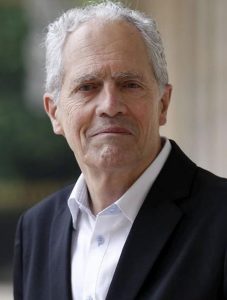 Title: The Philosophic Foundations of Mimetic Theory and Cognitive Science (including Artificial Intelligence)
Title: The Philosophic Foundations of Mimetic Theory and Cognitive Science (including Artificial Intelligence)
Abstract: Most papers read at the conference will likely establish bonds between artificial intelligence (AI) in its current forms and developments, with their promises and threats, and mimetic theory. My presentation will try to go back to the origins and show that the two disciplines share from the start common assumptions. How is it possible not to be struck by the fact that AI started with a thought experiment designed by Alan Turing under the name “imitation game”? It was a matter of testing whether a sufficiently well programmed machine is able to pass for a human being from the point of view of a human observer who interacts with it. The exploration of the implications of this commonality will revolve around the concept of simulation.
Bio: Jean-Pierre Dupuy is Professor Emeritus of Social and Political Philosophy, Ecole Polytechnique, Paris and Professor of Political Science and of Science, Technology, and Society, Stanford University. He is a member of the French Academy of Technology, a spinoff of the Academy of Sciences, and an honorary member of the Conseil Général des Mines, the French High Magistracy that oversees and regulates industry, energy and the environment. He chairs the Ethics Committee of the French High Authority on Nuclear Safety and Security. He is the Director of the Research Program of Imitatio, a foundation devoted to the dissemination and discussion of René Girard’s mimetic theory. He is author of numerous major works, including, in English, The Mechanization of the Mind (Princeton University Press, 2000); On the Origins of Cognitive Science (The MIT Press, 2009); The Mark of the Sacred (Stanford University Press, 2013); Economy and the Future. A Crisis of Faith (Michigan State University Press, 2014); A Short Treatise on the Metaphysics of Tsunamis (Michigan State University Press, 2015); Enlightened Doomsaying (Michigan State University Press, Forthcoming).
View the video of this presentation.
Johann Rossouw
 Title: Scapegoating, Mimesis and the Human Future: Thinking with Girard and Stiegler on the Automation of Desire
Title: Scapegoating, Mimesis and the Human Future: Thinking with Girard and Stiegler on the Automation of Desire
Abstract: The work of René Girard and Bernard Stiegler (1952-2020) share a number of striking similarities. They both offer an account of human cultural evolution (religion vs. technics), both were attuned to desire in contemporary politics and economics, both were deeply influenced by Catholic Christianity, both wrote about the scapegoat, and both were increasingly apocalyptic in their later writings. Drawing on their work in a comparative approach, in this presentation the threat of the automation of mimetic desire and rivalry, and the very real risk of the loss of mimesis as a force of culture will be considered, specifically with regards to Stiegler’s La société automatique: I. L’Avenir du travail (2015, translated as Automatic Society: Volume I: The Future of Work [Polity, 2016]).
Bio: After studying philosophy at the universities of Pretoria and South Africa, Rossouw completed a D.E.A. under Régis Debray at the University of Lyon-3 (2002), and a Ph.D. at Monash University, Melbourne (2013), on the theological in the work of Bernard Stiegler. He works in the fields of the philosophy of technology, post-colonial studies, tradition and modernity, and memory studies. He is the author of more than twenty peer-reviewed articles and book chapters, two Afrikaans novels, and more than 400 columns and articles, some of which have been appeared in Le Monde diplomatique and The New York Times. Rossouw is currently working on a monograph on Girard and South Africa’s enduring post-colonial condition, as well as a monograph on Stiegler and liturgical Christianity. He joined the Department of Philosophy and Classics of the University of the Free State in 2012, which he currently heads, and he also serves as priest of a small Orthodox missionary parish in Bloemfontein, South Africa.
View the video of this presentation.
Pablo Bandera
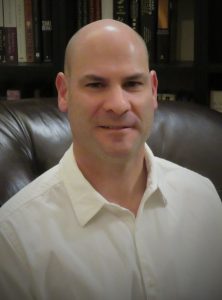 Title: Autonomous Robots: The Model/Rival of the Unhuman
Title: Autonomous Robots: The Model/Rival of the Unhuman
Abstract: Since the term “artificial intelligence” was first introduced over seventy years ago the public attitude toward robots and robotics systems has been generally positive. In the last decade, however, AI has enabled a particular class of robots—autonomous systems, which are able to operate and make decisions independently without human control—and the attitude has gotten decidedly more negative. This is a frequent topic of discussion at almost every technical conference on robotics: the challenge of educating the general public on the phenomenal capabilities and potential of autonomous systems, and of dispelling myths about robots taking over the world and becoming the enemies of mankind. But is this really the root of the problem, a lack of technical knowledge? Were robots easier to understand before autonomous systems, and are they scary now simply because we don’t understand how they work? While the engineering community is talking about autonomy in terms of capabilities and controllability, mimetic theorists understand that the perception of autonomy has much deeper implications. The dream of autonomy is the “romantic lie” that underlies our rivalrous relationships with our mimetic models, whom we envy as having a kind of higher being that we lack. But what happens when that higher being is threatening us from below, and our mimetic rivals are not even human?
Bio: Pablo Bandera is an aerospace engineer with a background in theoretical physics. He has spent most of his career designing and developing state-of-the-art technologies for a wide range of applications, from telecommunications to aircraft to space systems, and currently holds almost twenty patents. Until recently he was the Technical Lead at Honeywell Aerospace responsible for bringing to market one of his inventions—a unique motor design with direct applications to robots and drones. He is currently the Director of Product Development at Honeybee Robotics, developing motion control systems for spacecraft. When Pablo is not working on science & technology he is usually working on mimetic theory, on which he has presented and published several papers. He brought these two fields of study together in his recent book relating mimetic theory to quantum theory, and he is very grateful to continue this trend with his presentation at COV&R 2021.
View the video of this presentation.
Eric Gans
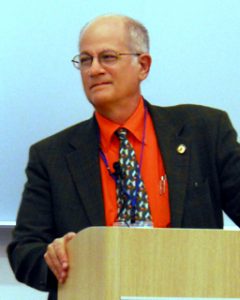 Title: Biological, Anthropological, and Algorithmic Mimesis
Title: Biological, Anthropological, and Algorithmic Mimesis
Abstract: This paper is an attempt to distinguish (1) prehuman, (2) human, and (3) AI-initiated mimesis. From what I have seen, the latter functions quite well in symmetrical “battle” situations such as board games, where programs can “learn” by playing themselves and seeing which strategies are most successful. But how can this technique be applied to something like writing poetry, for example? How does one know when poet 1 has “defeated” poet 2?
Bio: Eric Gans is Distinguished Professor Emeritus in the UCLA Department of French & Francophone Studies whose primary research interests include Generative Anthropology/Originary Thinking, literary theory, and 19th-century French literature. He received the Prix de la langue française –Académie Française 1977, and the Chevalier des Palmes Académiques 1982. Since 1981, his books include The Origin of Language: A Formal Theory of Representation (1981), The End of Culture: Toward a Generative Anthropology (1985), Science and Faith: The Anthropology of Revelation (1990), Originary Thinking: Elements of Generative Anthropology (1993), Signs of Paradox: Irony, Resentment, and other Mimetic Structures (1997), The Scenic Imagination: Originary Thinking from Hobbes to the Present Day (2007), A New Way of Thinking: Generative Anthropology in Religion, Philosophy, Art (2011), The Girardian Origins of Generative Anthropology (2012), Science and Faith: The Anthropology of Revelation, second edition (2015), Adam Katz and Eric Gans, The First Shall Be The Last: Rethinking Antisemitism (2015), and The Origin of Language, second edition (2019). He is founder of Anthropoetics: The Electronic Journal of Generative Anthropology (May 1995) and writes a column, “Chronicles of Love and Resentment” (July 1995 to present [700+ Chronicles through June May 2021]).
View the video of this presentation.
Wolfgang Palaver
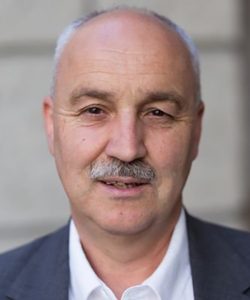 Title: The Desire to Be like God: Addressing Temptations Coming Along with AI
Title: The Desire to Be like God: Addressing Temptations Coming Along with AI
Abstract: Today we are facing serious problems by dealing with weak A.I. that requires more research on the consequences of our increasing use of algorithms in many areas of human life and that requires also regulations to limit its use. Reflecting on strong A.I. means looking into the future and forces us to reflect on what it means to be a human being especially if we are aware of our mimetic nature. Human longings for perfection lead to the following question. “If humans desire to be like God, will A.I. bring us closer to the fulfillment of this deeper longing or will it create new dangers?” These questions will be discussed by reading Heinrich von Kleist’s essay “On the Marionette Theatre” and viewing Steven Spielberg’s film “A.I. Artificial Intelligence” from the perspective of Girard’s mimetic theory.
Bio: Wolfgang Palaver is Professor of Catholic Social Thought at the University of Innsbruck, Austria. From 2007 to 2011, he was president of the “Colloquium on Violence and Religion”. He became aware of René Girard through his teacher at the University of Innsbruck Raymund Schwager SJ, met Girard for the first time in 1986 and spent a year as a research fellow at CISAC (Stanford University) in 1991/1992. He has published books and articles on violence and religion, Thomas Hobbes, Carl Schmitt, Simone Weil, and René Girard. Monographs: René Girard’s Mimetic Theory (Michigan State University Press, 2013); Transforming the Sacred into Saintliness: Reflecting on Violence and Religion with René Girard (Cambridge University Press, 2020). He is the co-editor of Passions in Economy, Politics, and the Media (LIT, 2005), The European Wars of Religion (Routledge, 2016), The Palgrave Handbook of Mimetic Theory and Religion (Palgrave, 2017), and Mimetic Theory and World Religions (Michigan State University Press, 2018). In fall 2018, he was a member of the research workshop on religion & violence at the Center of Theological Inquiry (CTI) in Princeton (USA). From January until June 2021, he will conduct a research project on Gandhi’s concept of nonviolence at The Stellenbosch Institute for Advanced Study.
View the video of this presentation.
Carly Osborn
 Title: Girard 101: The Theory of René Girard
Title: Girard 101: The Theory of René Girard
Abstract: An introduction to the main ideas of René Girard regarding desire, sacrifice, scapegoating, and scripture with questions and answers.
Bio: Carly Osborn is the Research Strategy Officer at the University of Divinity. She was the Education and Outreach Officer and a Research Fellow at The University of Adelaide node of the ARC Centre of Excellence for the History of Emotions. She holds a PhD in English, First Class Honours degree in English and a Graduate Diploma in Education (Secondary) from The University of Adelaide. Her PhD thesis ‘Tragedy, Sacrifice and the American Dream: A Girardian Reading of Some Post-War American Novels’ won the University of Adelaide Doctoral Research Medal. Tragic Novels, René Girard, and the American Dream: Sacrifice in Suburbia was published by Bloomsbury in 2020.
View the video of this presentation.
Arkady Plotnitsky
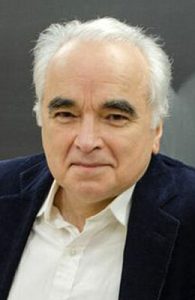 Title: The Destinies of Desire and Versions of the Virtual: Structures, Machines, and Desiring Machines
Title: The Destinies of Desire and Versions of the Virtual: Structures, Machines, and Desiring Machines
Abstract: The argument of this paper is based on two alternative concepts of desire. The first is associated with the concept of structure, and represented by Jacques Lacan’s and René Girard’s concepts of desire, and the second with the concept of machine, and represented by Gilles Deleuze and Félix Guattari’s concept of desire, as correlative to the concept of desiring machines (which they expressly juxtapose to the concept of structure). These concepts imply two very different aims and destinies of desire, referred to in my title. The second view of desire, while often discussed in literature on Deleuze and Guattari, is rarely, if ever, related to another famous concept of Deleuze, that of the virtual, introduced by him earlier but developed throughout his writings, including those with Guattari. There are several versions of this concept in Deleuze, none of which, however, while always defining a form of reality, is connected with the concept of virtual reality or the idea of AI. The origin of Deleuze’s concept of the virtual is in physics, specifically in quantum field theory, which is different from other quantum theories and indeed all other physical theories, because of the concept of the virtual it contains. In this talk, however, I shall connect Deleuze’s concept of the virtual to the concepts of virtual reality and AI. This connection is grounded in the role of chance and probability in all three areas and the corresponding versions of the virtual considered in this talk–quantum field theory, Deleuze’s philosophy, and virtual reality and AI.
Bio: Arkady Plotnitsky is a Distinguished Professor in the Department of English at Purdue University. His research interests include literature, mathematics, and philosophy. His books include The Principles of Quantum Theory, from Planck’s Quantum to the Higgs Boson: The Nature of Quantum Reality and the Spirit of Copenhagen (Springer, 2016); Niels Bohr and Complementarity: An Introduction (Springer, 2012); Epistemology and Probability: Bohr, Heisenberg, Schrödinger, and the Nature of Quantum Thinking (Springer, 2009); Reading Bohr: Physics and Philosophy (Springer, 2006); The Knowable and the Unknowable: Modern Science, Non-classical Thought, and the “Two Cultures” (University of Michigan Press, 2002); Complementarity: Anti-Epistemology After Bohr and Derrida (Duke University Press, 1994); In the Shadow of Hegel: Complementarity, History and the Unconscious (University Presses of Florida, 1993); Reconfigurations: Critical Theory and General Economy (University Press of Florida, 1993); Reality Without Realism: Matter, Thought, and Technology in Quantum Physics (Heidelberg: Springer/Nature, 2021).
A Special Panel on Loving Mimesis
Rebecca Adams
 Title: From Colonizing Mimesis to Loving Mimesis: A Brief Theoretical Overview
Title: From Colonizing Mimesis to Loving Mimesis: A Brief Theoretical Overview
Abstract: In my part of our discussion, I will briefly revisit Girard’s fundamental concept of mimetic desire: where it comes from, and what some of its logical implications are. In his formulation of mimetic desire, Girard discusses at length the phenomenon of the “coquette” (one who desires herself as an object and so becomes the object of desire by her suitors) and he also touches on another scenario which he does not really develop but which has enormous potential within mimetic theory for understanding the experience of historically oppressed peoples: “colonization.” In colonization, the mediator desires the one imitating as an object. This desire of the mediator is then internalized by the one doing the imitating. The antidote to this violent way of being in social relationships is loving or creative mimesis, which I will review and the other panelists will discuss and apply to particular situations.
Bio: Rebecca Adams is a long-time member of COV&R who came to Girard through the study of English literature and literary theory. She studied with him personally. As a graduate student at the University of Notre Dame she edited the journal Religion and Literature where she interviewed Girard. Today she works as an independent scholar as well as a freelance editor of academic manuscripts.
Julia Robinson Moore
 Title: Legacies of American Coloniality and the Possibilities of Racial Healing: De-constructing ‘Whiteness’ Through the Lens of Mimetic Theory
Title: Legacies of American Coloniality and the Possibilities of Racial Healing: De-constructing ‘Whiteness’ Through the Lens of Mimetic Theory
Abstract: In my part of our discussion, I take up themes of mimetic desire and coloniality with regard to the dehumanization of indigenous and enslaved subjects in America. With an eye towards addressing the ways mimetic theory helps us think through the processes of negative subjectivity within the mimetic paradigm, I will highlight issues of race and the social construction of whiteness as these issues developed and changed over the course of America’s racial history. Key in my discussion is the ever-changing phenomenon of socially constructed scapegoats and I will attempt to address the question of what the racial landscape in America would have looked like if its Christians founders had engaged in what Adams calls “loving mimesis” toward those the founders had deemed “other”?
Bio: Julia Robinson Moore is an ordained Presbyterian minister in the Presbyterian Church (USA) and an Associate Professor in the Department of Religious Studies at UNC Charlotte. She teaches courses in African American religion, religions of the African Diaspora, and racial violence in America. She is the author of Race, Religion, and the Pulpit: Reverend Robert L. Bradby and the Making of Urban Detroit (Wayne State University Press, 2015). In my present research, I investigate the complexities of black and white race relations in the New South through the sacred context of the Presbyterian Church.
Felicity McCallum
 Title: Women and First Nations People Besieged: Why Getting Australia’s History Right is a National Emergency
Title: Women and First Nations People Besieged: Why Getting Australia’s History Right is a National Emergency
Abstract: In my part of our discussion, I will examine national emergencies in Australia. Every week, a woman dies from domestic violence and one First Nations person dies in jail. First Nations people currently constitute only 2.9% of the entire population of Australia, yet occupy 30% of our jails. Since the “Royal Commission into Aboriginal Deaths in Custody (RCIADIC)” thirty years ago, there have been four hundr3ed and seventy more deaths, with no convictions. Both the paralysis around Australia’s official response and entrenched inaction regarding these crises can be traced to events that started in 1788, when British settlers, backed by the British military forces, invaded traditional First Nations’ societies in Australia. Rampant, violence, theft, and murder of First Nations people went largely unreported and unpunished. Kidnapping, theft, and sexual exploitation of First Nations Australian women was rife. These acts scandalised their husbands and led to revenge killings inflamed by outrage in a frenzied triangulation of desire. As result, the size of First Nations populations was decimated. Imported disease and forced dislocation of traditional cultural structures caused fertility rates to dive. Cries to stop the shocking violence against First Nations Australian people, so starkly evident in Australia’s judicial systems and prisons, fell on deaf ears. Why are women in Australia so vulnerable to death by violence from spouses in their own homes? How do these maladies reflect Girard’s “scapegoat mechanism” operative at so many levels of Australian’s national consciousness and day-to-day life? These are the questions I will explore.
Bio: Felicity McCallum has twenty-five years’ experience in education, in the primary, secondary and tertiary sectors of Australia and France. Felicity is an Awabakal woman. Her doctoral research focuses on the relationship and reconciliation between Indigenous and non-Indigenous Australians, with a particular reference to the theory of René Girard. She is First Nations Adviser to the National Council of Churches for Australia. She lectures at the Australian Catholic University and is a facilitator in formative spirituality and non-executive Director on a number of national boards in Australia.
Vern Neufeld Redekop
 Title: Yeshua as Mimetic Model of Loving Mimesis in a Colonizing Context
Title: Yeshua as Mimetic Model of Loving Mimesis in a Colonizing Context
Abstract: In my part of our discussion, I will ask how Jesus lived within a context of double colonial structures where Rome controlled the country, and the Jewish Sadducee-dominated Sanhedrin controlled the official sacrificial system of the Temple. Jesus creatively constituted a Messianic role that would enact the essence of Torah and the Prophets through a framework of loving mimesis inspired by Isaiah—the Servant Songs and Is. 61:1-2 (see Luke 4:18-21), including “to set free (extend agency and capability to) those who were downtrodden.” Part of this action of empowerment was Jesus’ capacity to reframe actions. For example, the woman who gave two small coins was represented as giving more than the ostentatious contributions of the rich. The woman who poured perfume on Jesus’ feet is represented as anointing him––normally, an action performed by prophets. How can we use the narratives of Jesus heuristically to carve out our own “messianic” callings creatively, in other words, to engage in loving mimesis? How can we live freely and joyously in a context tainted by colonial legacies while resisting, deconstructing, and transforming oppressive power structures?
Bio: Vern Neufeld Redekop is a professor emeritus of conflict studies at Saint Paul University, Ottawa. He organized the COV&R 2006 Conference at Saint Paul University (Ottawa, Canada) on the theme of mimesis, creativity, and reconciliation. This conference led to two books which he edited with Thomas Ryba: René Girard and Creative Mimesis (2013) and René Girard and Creative Reconciliation (2014). His most recent publications (edited with Gloria Neufeld Redekop) are Awakening: Exploring Spirituality, Emergent Creativity, and Reconciliation (2019) and Transforming: Applying Spirituality, Emergent Creativity, and Reconciliation (2021).
The 2019 Conference of the Colloquium on Violence and Religion (COV&R) on “Imagining the Other: Theo-Political Challenges in an Age of Migration” examined how we imagine and how we image “the Other”, is a decisive element in the (theo-) politics of exclusion and desire that feed on these challenges. Aware that imagination is a mimetic process, the 2019 conference of the Colloquium on Violence and Religion (COV&R) wants to address these challenges by trying to illumine different aspects of this complex entanglement, asking whom or what we mean by “the other”: the stranger and migrant, the brother or sister, nature that envelops or defies us, the transcendent Other to whom religions refer or the other sex or gender …?
Videos of the plenary sessions are available. Papers presented in the concurrent sessions will be available soon.
The 2018 Conference of the Colloquium on Violence and Religion (COV&R) on “Religion, Politics, & Violence ‘after’ Truth” immediately suggests the supposedly “post-factual” cultural moment, having particular resonance with recent anxieties over “fake news,” “alternative facts,” and other pathologies of the contemporary political sphere. Yet “After Truth” also indicates “the pursuit of truth,” and it prompts us to think about where we are and who(se) we become both when truth is obscured and after it is disclosed. Truth, deception, and indifference to truth are foundational concerns of René Girard’s Mimetic Theory, and the moment is apt to revisit them. The 2018 meeting of The Colloquium on Violence & Religion invites scholars and practitioners to share research and experience related to this theme, engaging with Mimetic Theory across the disciplines. Our aim is a fruitful exchange of ideas exploring, developing, critiquing, and applying Girard’s Mimetic Theory in relation to this pressing contemporary matter.
The plenary speakers for the Annual Meeting covered a cross-section of Philosophy, Culture, Religion, and Literature. Videos of the lectures by Paul Dumouchel, Laura Kipnis, Jack Miles, and Rev. Kevin F. Burke are now available.
Many of the papers presented at the 2018 Annual Meeting in Denver are now available. Have your member number handy, because they are available only to members.
The processes of identity formation may follow different paths. These processes might pursue a narrative, a ritualistic, a mythological, or a political trail, among others. Nationalisms, indigenisms, religious revivals, political and economic protests, movements of the masses, and therefore, the dynamics of identity are today becoming increasingly more complex. Spain has been a country of culture clashes or encounters, rivalries, conflicts and fratricidal wars, but it has also been the homeland of great artists such as Cervantes, Velázquez, Calderón de la Barca, Goya, García Lorca and Picasso. Their contributions to the understanding of t human nature have been revolutionary and Girard’s predilection for Cervantes is well known. We like to believe that Spain constitutes a privileged vantage point from which to evaluate the possibilities and limits of identity construction processes in our world.
In COV&R 2017 in Madrid, scholars explored the roots of identity; the ways rivalry survives and rises over the centuries as a force of destruction and foundation. Jean-Michel Oughourlian, Cesáreo Bandera (University of North Carolina at Chapel Hill), Charles Powell (Real Instituto Elcano), Jon Juaristi (Universidad Alcalá de Henares), Roland Hsu (University of Stanford), and Carlos Mendoza-Álvarez (Universidad Iberoamericana de México) were plenary speakers. Wolfgang Palaver and Sandor Goodhart discussed Identity and Inter Religious Dialogue. The Raymond Schwager Memorial Prize was awarded to Lyle J. Enright of Loyola University Chicago. Pankaj Mishra spoke on the Geopolitics of Mimicry. Prior to the beginning of the annual meeting, a refresher course on mimetic theory was offered.
One of the most pressing issues of our time is the outbreak of extremist violence and terrorism, done in the name of religion. Much has been written on this topic, particularly in the context of Islamic terrorism. However, there is much misunderstanding on this topic, presenting the need for a well-grounded analysis.
Further, a Girardian lens has not been comprehensively applied to this major issue of our time, even though mimetic theory opens up many possibilities for a new and in-depth analysis. This conference seeks to address this issue, with a range of experts in mimetic theory, Islamic studies and terrorism studies.
In particular, the conference will critically analyse the link made between religion and violence, and explore contemporary instances of violence done in the name of religion, such as Islamist terrorism and radicalization in its various political, economic, religious, military and technological dimensions.
We aim to analyse religious violence from multiple disciplinary perspectives (as the range of conference speakers attests). We particularly aim to bring together the insights of René Girard, the premier theorist of violence in the 20th century, with the latest scholarship on religion and violence, particularly exploring the nature of extremist violence.
The conference is open to academics, professionals, religious practitioners, military, police, and anyone interested in engaging this topic in respectful dialogue. The conference will have a special “Tribute Dinner for René Girard (on his death)” at the Park Hyatt, East Melbourne. We are hoping that the international Girardian community will make an effort to participate in this important conference and pay tribute to the memory of René Girard.
We have an exciting range of internationally acclaimed speakers who will present at the conference, including:
- Professor Asma Afsaruddin (Indiana University, USA)
- Professor Anne Aly (Edith Cowan University, Western Australia)
- Rev Dr Sarah Bachelard (Australian Catholic University, Canberra)
- Professor Greg Barton (Deakin University, Melbourne)
- Reverend Professor Frank Brennan SJ (Australian Catholic University and Charles Sturt University)
- Associate Professor Kathleen Butler (University of Newcastle)
- Professor William T. Cavanaugh (De Paul University and author of The Myth of Religious Violence), who will give the Raymund Schwager Memorial Lecture
- Professor Jean-Pierre Dupuy (École Polytechnique, Paris / Stanford University, California)
- Dr Chris Fleming (Western Sydney University, NSW)
- Most Rev Dr Philip Freier (Anglican Archbishop of Melbourne/Primate of The Anglican Church of Australia)
- Professor Wolfgang Palaver (the University of Innsbruck)
- Ms Naomi Wolfe (Australian Catholic University)
Extended biographies are available on the keynote speakers page.
The format of the conference will include evening keynote addresses, followed by morning panel sessions on the same topic as the keynote. The morning sessions will have extended time for discussion and questions to explore the key conference themes, such as the relationship between religion and violence, and an analysis of contemporary religious violence, especially Islamist extremism. The conference will also feature a panel on violence and religion in Australian-Indigenous history.
The conference is hosted by the Australian Catholic University. It is co-organised with the Australian Girard Seminar (AGS) and will incorporate its 6th annual conference.
The 2015 Conference took place at Saint Louis University, from July 8-12. It was keynoted by Shawn COPELAND, a professor of theology at Boston College. She gave a talk on Friday July 10th called, “The Risk of Memory, The Cost of Forgetting.” James ALISON delivered a keynote on the evening of Wednesday July 8th, which served to open the conference. It is titled “Taking Cinderella to the Ball: how a mimetic anthropology restores the theological virtue of hope to its rightful place.” The conference was excited to have Peter THIEL back to give a keynote on the evening of July 9th. We also had a plenary panel on the future of mimetic theory and theology (July 10th) with Nikolaus WANDINGER, Brian ROBINETTE (theology, Boston College) and David BENTLEY HART (current occupant of the Danforth Chair, Saint Louis University). In addition, the lynching project, now in its fifth year, organized a keynote panel around the theme of Ferguson and race. As usual, we had a keynote devoted to the Schwager Award winners. We were especially happy to have a panel devoted to the founding and history of COV&R to celebrate its “Silver Jubilee.” James WILLIAMS, Martha REINEKE, and Gil BAILIE will recall their memories of the early years of the conference.
The memory of the outbreak of the First World War a hundred years ago raises far-reaching questions concerning the source and course of violent confrontation. This can be seen in recent publications about the subject such as: Christopher CLARK’s The Sleepwalkers (2012), Ernst PIPER’s Nacht über Europa (2013) and Herfried MÜNKLER’s Der große Krieg (2013), among others. The nature and proportions of the First World War led some theoreticians to define it as a breach in human history and as the great seminal catastrophe of the 20th century. Such an event calls for a wide-ranging analysis of the different aspects of the war itself, something that Herfried MÜNKLER carried out with unprecedented detail and rigor in his monumental book about the Great War. Never before had the relationship of attack to defense implied such an escalation towards the total deployment of antagonist forces on a global level. However, it is not only the trans-European character of the conflict or the brutality of trench warfare that raises significant questions about this singular event, but the transformative character and the dissemination of violence that can be located before and after the war itself: on the one hand, the Napoleonic and the FrancoPrussian wars in the 19th century; on the other hand, the Russian, Chinese and Spanish civil wars and the rise of totalitarianism in the 20th century. In this sense, the First World War can be seen as a crystallization point of what René GIRARD – against the Hegelian understanding of history – has called “the law of human relations”: an escalation of violence even at the risk of total destruction.
René Girard
In his discussion with Benoît CHANTRE on the escalation of violence originally published under the title Achever Clausewitz (English translation Battling to the End, German translation Im Angesicht der Apokalypse. Clausewitz zu Ende denken), René GIRARD draws on the resources of mimetic theory to analyze the problematic of the “escalation to the extremes”, or more specifically: the inability of politics to contain the reciprocal intensification of violence, the transformation in the nature of warfare from the 18th to the 20th century and the implications of the French-German conflict (from the Franco-Prussian war to the battle of Verdun) with regard to the new forms of worldwide violence in the 21st century. GIRARD’s book Battling to the End offers as coordinates three axes of reflection which situate the thematic nucleus of this conference: sacrifice and the modalities of the sacred (from the “archaic” to the “corrupted” sacred); the nature and implications of warfare; and the transformation of violence on a global scale. These thematic questions articulate a complex field of research and pose challenging questions to GIRARD’s sense of mimetic theory. Is Christian revelation the only possibility of identifying the ultimate injustice of sacrificial mechanisms, and, if so, is it doomed to failure by its very elimination of sacrifice as the means to temporary and partial pacification? Do we live in a world in which political institutions can no longer provide a counterweight to the disseminating and ever increasing violence perpetuated by humans? Does the Girardian use of the term “absolute war” apply to our contemporary reality, despite the decentered character of warfare after the collapse of states? These questions call for discourse among different disciplines – like philosophy, theology and anthropology, as well as political and social sciences – in order to shed light on the problematic of the escalation of violence and victimization. They also show the challenges of modern Western culture in reflecting upon the role of peace in educational contexts and how important Girard’s mimetic insights into desire and rivalry are in this respect.
Jean-Luc Marion
GIRARD declares in his book the necessity of producing “a quite different kind of rationality” (Battling to the End, p. 2) in order to grasp the radical nature of violence. Accordingly, the conference will seek to compare the contribution of mimetic theory with the insights of other theories and disciplines. The phenomenology of “donation” developed by Jean-Luc MARION points to important aspects in this context. MARION’s approach to the problem of evil and vengeance in Prolegomena to Charity runs parallel to several lines of the Girardian analysis of the scapegoat mechanism, not only in the relationship between aggression and victimization, but also in the role of charity as providing the only escape from a subjectivity imprisoned by the destructive mechanisms of rivalrous desire. In order to think beyond this “logic of evil”, MARION seeks to develop what GIRARD declared a cultural desideratum: an alternative type of rationality. That is in the broad sense the purpose of MARION’s “third reduction”, a reduction no longer to the appearance of objectivity (HUSSERL) or to the beingness of being (HEIDEGGER), but to donation itself. The implications of this step beyond the purview of phenomenology lead inter alia to quite another view of sacrifice, related to the very comingover that delivers the gift from any kind of conditioning: sacrifice as something that does not require destruction, exchange or even contract, but a radical approach to the infinite – a line of thought prominent also in the works of Emmanuel LEVINAS and Jan PATOČKA.
Humanity is more than ever the author of its own fall because it has become able to destroy its world. -René Girard
From July 10-14, 2013, the University of Northern Iowa will host the annual meeting of COV&R. The theme of this year’s conference is “A Land between Two Rivers: Space, Place, and Mimetic Theory.” This theme is an appropriate one to consider in Iowa, because visitors to the state find most memorable the vast expanses of land and sky. But the land, which has been central to Iowa’s economy and to the nation’s food supply, is undergoing massive change as industrial agriculture replaces family farms. With Iowa as a focus point for reflection, conference participants will consider how mimetic theory can illuminate ecological issues, contribute to environmental ethics, and inform our reflections on interconnections among organisms and varied forms of life.
Our conversation will be facilitated by three keynote addresses on the conference theme. Laura JACKSON, who holds a Ph.D. in ecology and evolutionary biology from Cornell University and is a professor of biology at UNI, will help lay groundwork for our discussion, drawing on her expertise in ecology and sustainable agriculture. JACKSON will speak about the demise of the family farm and the rise of industrial agriculture, which is posing serious ecological challenges. Her presentation is “Restoring Ecological Health in an Agricultural Sacrifice Zone.”
Our second keynote speaker, Whitney BAUMAN, a professor of religious studies at Florida International University and a graduate of Graduate Theological Union, will offer the Raven Foundation Lecture. The driving question behind BAUMAN’s specialization in the area of religion and ecology is: How do religious beliefs, insights, doctrines, and practices shape the material-physical worlds around us? Even if one does not adhere to or practice a given tradition, religions have shaped the cultures in which humans live. In BAUMAN’s work, he analyzes how answers to the “big questions” with which religions have grappled have shaped the human relationship with the rest of the natural world. He is especially interested in analyzing how these “big questions” are changed by forces such as global climate change and globalization. In the end, he understands these religious questions to be questions about ethics: how ought we to live responsibly as human beings vis. a vis. the rest of the natural world. Bauman will speak on “Religion, Ecology, and the Planetary Other: Opening Spaces for Difference.” Following his lecture, there will be a reception sponsored by the Raven Foundation.
Our final keynote speaker will be Mark WALLACE from Swarthmore College. WALLACE, a graduate of the University of Chicago, will deliver the Raymund Schwager, S.J. Memorial Lecture. Early in his career, WALLACE edited Curing Violence: Essays on René Girard with Thee SMITH. He has not been engaged directly with mimetic theory in recent years and views the invitation to join us this summer as an opportunity to forge links between his early and current work. WALLACE’s research and writing now are situated within the emerging field of religion and ecology. Noting an affinity between religion and ecology, WALLACE sees the intellectual wager of this discipline as follows: the often unknown wellsprings of human beings’ perspectives on the environment must be tapped if we are to understand adequately how individuals and societies have conceived of their place in the natural world. WALLACE reflects on questions such as: Are human beings part of or beyond nature? Do human beings have obligations to other life forms? Does the cosmos have an inherent purpose or function? For WALLACE, these questions are religious, moral, and ecological at the same time. They animate WALLACE’s writing, especially in regard to the role Christianity has played in both deepening and ameliorating the environmental crisis in our time.
In order to facilitate our conversations with the keynote speakers, BAUMAN’s and WALLACE’s addresses will be followed by breakout sessions in which session participants will discuss the lectures in small groups. There also will be a “wrap-up” session on the keynote addresses that will afford the small groups an opportunity to share insights from their discussions when we reconvene in the auditorium. So also will all three keynote speakers engage each other in discussion on the conference theme. This synthesizing session will be facilitated by Wolfgang PALAVER.
We will continue our special emphasis on lynching during a plenary session. Julia ROBINSON, Barbara THIEDE, and Joseph WINTERS from the University of North Carolina at Charlotte will speak on “Literary Lynchings: Mimetic Theory, Race, and Lynching in Jewish and African American Literature. “ René GIRARD’s treatise of the term “lynching” captures the socially constructed imaginary of perpetrators, the maleficence of rivalry and the dubious monsterization of their victims. Further, the term exposes the depths of mimetic transference of a society’s deviant propensities to reclaim and revalorize a communal identity over against a mythic surrogate. As GIRARD states, “The representation of lynching in myth is always found in a context that necessitates the inference of its reality, because only that inference can illuminate that myth as a whole in all its details.” The study of lynching, amid its multifaceted forms within global communities, promises to reveal the central efficacy of collective acts of violence, thereby unveiling the paradigmatic patterns of thought and behavior that shape oppressive ideologies. Lynching then, can become a lens by which to expose and even deconstruct historically reified and culturally defined narratives of race, religion, and even, gender. This year’s plenary on the study of mimetic theory and lynching addresses African American and Jewish literary productions.
The concluding plenary of the conference on Saturday afternoon, offered with the support of the Raven Foundation, will feature Brian MCLAREN and James ALISON speaking on “Exploring the New Paradigm: Girard and the Christianity of the 21st Century.” With reference to the new curriculum, Jesus The Forgiving Victim, which is being launched, MCLAREN and ALISON will explore some of the differences which GIRARD makes to how we read the Bible, how we might live the reality of Church, and what sort of worldwide networks we might find ourselves getting involved in as this understanding of Christianity takes wing. ALISON, whose work is informed by the thought of René GIRARD, is the author of many books including The Joy of Being Wrong: Original Sin through Easter Eyes and On Being Liked. He is featured in Jesus: The Forgiving Victim. MCLAREN founded Cedar Ridge Community Church, an innovative, transdenominational church in the Baltimore-Washington region. He recently left the pastorate to devote full time to writing and speaking. His books include, The Secret Message of Jesus, Everything Must Change, Finding Our Way Again, and A New Kind of Christianity.
Other conference highlights will include a showing of the documentary Hellbound? A panel discussion of the film moderated by Adam ERICKSEN will feature filmmaker Kevin MILLER, Michael HARDIN, and Vanessa AVERY. Book sessions will feature The Girardians by James WILLIAMS, Beneath the Veil of the Strange Verses: Reading Scandalous Texts by Jeremiah ALBERG, and René Girard’s Mimetic Theory by Wolfgang PALAVER. Vanessa AVERY will offer a workshop about a new training program that has been designed to help institutional leadership, management and staff to identify the stages of scapegoating in the workplace, find effective ways to intervene, and ultimately transform organizational culture into a culture of healthy, above-board, generous relationality. She will present an overview of the training, (with a focus on the scapegoating model developed out of GIRARD’s thought), and some initial reflections from having completed the first run of the pilot program. In addition, over sixty papers will be featured in concurrent sessions at the conference.
I look forward to welcoming everyone to Iowa. In addition to hosting a conference that promises to be dynamic and engaging, I also will be introducing you to the history and distinctive culture of the area. Special events during the conference will acquaint participants with some interesting and unique aspects of rural life and small-town America. These will include a “Friday night down-town” evening of dining and entertainment on Cedar Falls’ Main Street, an award winning shopping and dining district that is quintessentially Midwestern. There are three Saturday morning excursions from which to select. Some participants will travel to the Amana Colonies, site of one of America’s longest lasting Utopian communities that was settled by German Pietists in 1855. Others will visit the Seed Saver’s Exchange, a world-famous repository for heirloom seeds that features gardens, orchards, and White Park cattle. Because most seed companies produce only a few varieties of seed, seed repositories play a critical role. Large-scale agriculture favors genetic stock in which quantity of production and ease of transport (e.g. fruits impervious to bruising in transit) are more important than quality (e.g., taste). Further, large-scale agriculture crops lack genetic diversity. If diseases wipe out a particular crop, in the absence of a seed stock that is genetically different, the entire plant species may go extinct. The Seed Saver’s Exchange preserves genetic diversity as a protection against plant extinction. The Exchange also makes available to the individual gardener genetically diverse fruits and vegetables that enrich our eating experiences. The third excursion will be to the Cedar Hills Sand Prairie and will include a showing of the award winning documentary: America’s Lost Landscape: The Tallgrass Prairie. The conference will conclude with a wine and cheese reception and the traditional banquet. “Mimetic Magic,” a show by New York magician and Girardian, James WARREN, will follow the dinner.
A disaster that so perfectly combines natural and human elements, means that we cannot forget those who suffered and those who suffer still. Our opening and closing plenary session will touch on this matter directly.
Prof. Norio AKASAKA has used mimetic theory extensively in his research over the last twenty years. He is the author of over twenty books, many dealing with the Tohoku region which was so severely afflicted by the catastrophe. In the aftermath of the earthquake, tsunami, and nuclear radiation he was named to the government’s committee on rebuilding Tohoku. He has spent the last 14 months laboring tirelessly for the people of this region.
Prof. Jean-Pierre DUPUY is well known to the members of COV&R. He will open the Conference with a paper titled, “Catastrophes and Near-Misses”. His work, Petite métaphysique des tsunamis, has already been published in Japanese, so his thoughts on this latest disaster are highly anticipated in Japan as well in other parts of the world. He will think through the meaning of being “that close” to annihilation in terms of human history.
Prof. Paul DUMOUCHEL will be joined by a distinguished panel to discuss his important monograph published last year, Le Sacrifice Inutile.
Prof. Chris FLEMING, the author of the outstanding René Girard: Violence and Mimesis, will deliver a paper dealing with Hiroshima and the Holocaust. He will be examining some of the different moral and cultural impacts of these two quite different “events.” The title for the paper is “Apocalypse and Modern Victims.”
Prof. Eric GANS has given much thought over the years in his Chronicles of Love and Resentment to the meaning of various twentieth-century catastrophes such as the Shoah, and Hiroshima as he has developed his theory of Generative Anthropology. COV&R welcomes him again as he addresses us with a paper titled “Auschwitz, Hiroshima, and the Victimary Era.”
Profs. Sandhor GOODHART and Julia ROBINSON will hold a session that investigates the phenomenon of lynching.
Prof. Shoichiro IWAKIRI is the translator of Girard’s I Saw Satan Fall Like Lightening. He will be “translating” again as he addresses us on the topic of “‘It is all like a strange dream.’— The Girardian Structure and the Dionysiac elements.”
Ms. Somaly MAM is known for her work helping the victims of the sex-trade and human trafficking in Cambodia. A victim herself, she tells her own story in The Road of Lost Innocence. She has received a number of rewards and recognition for her work, being named Glamour’s Woman of the Year and one of CNN’s Heroes in 2006. In 2009 she was named one of Time magazine’s 100 most influential people. Somaly MAM’s extraordinary personal strength and ongoing struggle for a just world COV&R Bulletin 40 (May 2012) 3 where human beings are no longer enslaved and exploited, earned her the first Roland Berger Human Dignity Award in 2008. I would urge COV&R members to look at her foundation’s website.
Prof. Richard SCHENK, O.P. was recently selected as President of the Catholic University of Eichstätt-Ingolstadt in Germany (2011-2016). SCHENK’s publications have centered on issues in the history and systematics of philosophical and theological anthropology and interreligious relations. We are honored to have him deliver the 2012 Raymund Schwager, S.J. Memorial Lecture
“B. C. Hearing you, someone could take you as a defender of order.
R. G. And he would be wrong! (…) In a society without crisis, completely stabilized in the absence of violence, cannot be history.” -René Girard, Achever Clausewitz
In René Girard’s latest book, Achever Clausewitz, the continuum of disorder and order in history and politics is considered from an apocalyptic standpoint. In the case of Clausewitz facing Napoleon, the encounter between the imitator and his model turns into an escalation which inexorably propagates to the whole of Europe. At the end of his analysis, Girard comes to the conclusion that there is no difference between chaos and order any more. Neither political aims, nor objects or victims make the difference. It is only the escalation to the extremes! which will drive — from now on — the relationship between doubles. Can we agree with Girard that the mimetic clash between enemy brothers will eventually lead to sheer mutual destruction? This is the starting point of the Conference.
Within the framework of current international politics, this critical issue may be further developed. Are we approaching the day when the civilizations influenced by the West will play a global role, without further need for a legitimizing model?
Hence a third group of questions, which America as well as Europe is concerned with. Will the West accept a ‘painless decline’? Or will it, rather, face a future of mimetic chaos, where more and more violence will be daily news? Can that really be the last word from the West about the mimetic roots of human culture? Of course, it is not our intention to launch some sort of pathetic call for the support of Western culture. We might rather feel challenged to prove the persistency of its roots. In the course of its own mimetic crisis, will the Western culture be able to face up to disorder and rivalry by establishing a model for creative mimesis?
The main topic of the conference: disorder/order in history and politics will be developed through four sections of study.
- Europe: the land opposite.
- The Mediterranean sea: what are we doing in here?
- Revenge: get your own back
- Realism and sacrifice in figurative arts, literature and cinema
Violence clearly transforms persons and communities. Violence is also transformed by those same, affected persons and communities, as they struggle to live in its wake or under its continued threat. What sort of artistic, expressive forms and cultural formations result from the experience of violence? How do they give and conceal evidence of their violent genesis? What determines whether or not a cultural form puts violence to rest, keeps it at bay, perpetuates it, or awakens its reappearance in yet another, related form? Can the “art” of violence become the work of peace? If so, how and under what conditions?
Co-organizers: Ann W. Astell and Margaret Pfeil, Department of Theology
Graciously co-sponsored by the University of Notre Dame’s Center for Religion and Society, Center for Social Concerns, Department of Theology, Department of Romance Languages and Literatures, Institute for Church Life, Institute for Scholarship in the Liberal Arts, Joan B. Kroc Institute for International Peace Studies, Mendoza College of Business, Nanovic Institute for European Studies, Office for the Vice President of Research, Program in Catholic Social Tradition, Program of Liberal Studies, School of Architecture, School of Law, Religion and Literature, and Snite Museum of Art, as well as Imitatio, Inc., and the Raven Foundation.
Keynote speaker Professor Tariq Said RAMADAN is an internationally renowned commentator on Islam. Professor RAMADAN is Senior Research Fellow at St Antony’s College, University of Oxford, and President of the European Muslim Network. He has written extensively on Muslim themes, including the challenges of globalisation, modernity and European identity, and will give the Raymund Schwager Lecture on the opening evening of the conference. A response from COV&R’s President Wolfgang PALAVER, will set out the parameters for a discussion of Mimetic Theory and Islam.
This is an important turning point for COV&R. Are we committed to the claim that the resources for non-violent transformation – that is, the overcoming of violent mimesis and the rejection of scapegoating – are to be found with the Judaeo-Christian tradition alone? What, then, are we to make of the presence of pacific spiritual resources within other religious traditions? We have felt that this important theme required a sustained and focussed dialogue: on Thursday 9th July we will be further guided by Dr Michael BARNES SJ and Professor Gwen GRIFFITH-DICKSON. Dr BARNES is a specialist in the Theology of Inter-Religious Dialogue at Heythrop College, with a background in Indian religions. He is the author of Theology and the Dialogue of Religions, and runs the de Nobili Inter-Faith Centre in Southall, West London. Professor GRIFFITH-DICKSON is the Director of the Lokahi Foundation, which seeks to progress a more diverse and harmonious society through research and grassroots activity. Her academic background is in philosophical theology and the theology of religions; she is also Visiting Professor at King’s College, University of London.
Scholars from the three Abrahamic traditions will converse together on themes of mutual concern. Dr Reza SHA-KAZEMI, who researches at the Institute of Ismaili Studies in London, has a background in international relations and politics, as well as the study of religion. He is the founding editor of the Islamic World Report, and has written extensively on Shi’i and comparative spirituality. Jonathan GORSKY and Ahmad ACHTAR lecture in Jewish and Islamic Studies, respectively, at Heythrop College; while Dr Peter TYLER is Senior Lecturer in Spirituality at St Mary’s University College, with specialist interest in Carmelite spirituality and the philosophy of Ludwig WITTGENSTEIN. Dr Nur MASALHA directs the Holy Land Research Project at St. Mary’s University College. He is the editor of Holy Land Studies, a multidisciplinary journal, and the author of several works on Palestinian politics. Sheelah Treflé HIDDEN and James ALISON will present insights on these themes from the perspective of mimetic theory. Sheelah is a research student at the University of Wales at Lampeter, with specialist interest in the dialogue between the contemplative traditions of the Abrahamic religions. James is the Director of Educational Projects for the Imitatio Foundation, and a freelance theologian with numerous books on mimetic theory to his name, including The Joy of Being Wrong and Faith Beyond Resentment. We hope to confirm the name of at least one high-profile Muslim woman speaker for these sessions.
The rest of the Colloquium will explore more widely the implications of mimetic theory, specifically (on Friday 10th July) via a series of parallel workshops, to which participants will be invited to sign up at the beginning of the Colloquium. The purpose of these groups will be to consolidate existing insights, such as: the convergence between the thought of René GIRARD and Bernard LONERGAN, and the fecundity of mimetic theory for new paradigms in science. These sessions will also enable new breakthroughs – not least geographical, as we explore the reception of mimetic theory in the countries of ‘the South’, and in central and eastern Europe twenty years after the fall of the Berlin Wall. Participants who have a special interest or expertise in these workshop themes are invited to think how they might contribute, however informally.
The meeting included a number of exceptional speaker including Jean-Pierre Dupuy, Jack Miles, Peter Theil, Gianni Vattimo, and W.T.J. MITCHELL. A panel on politics and religion included James Gelvin (Professor of History, UCLA) and
John Smith (Professor of German, UC Irvine). A special session was devoted to Girard’s book Achever Clausewitz.
The commission preparing the Colloquium on Violence & Religion (COV&R) 2007 in Amsterdam proposes to link up with Mak’s challenge to rethink the concepts of tolerance in different social and political contexts. The developments in the Netherlands do not stand alone. They epitomise fundamental questions concerning vulnerability and tolerance in today’s world. We invite the participants to explore the significance of the connection of tolerance and vulnerability in their respective disciplines and in their various professional or personal experiences using the models of mimetic theory in their analyses.
Participants are invited to explore the possibility that the concept of creative mimesis can help develop a framework for constructive, mutually-empowering human relationships that can avert violence when it threatens, and develop life-affirming responses when it occurs. When mimetic desire becomes creative, reconciliation and active flourishing occur as individuals or communities consciously create alternatives to scapegoating.
The question as to whether imitation of Christ is an activity of human beings or a matter of God’s grace, the alternatives of either-or turns out to be false in the Christology that emerges from the reflections of three thinkers – Bonhoeffer, Schwager and Girard.
The theme of the symposium was nature and human nature in light of mimetic theory. The environment of Ghost Ranch confronts one with a starker sense of the difference between the total environing world and the routine social worlds with which we are familiar.
Has the media of communication become the new “church,” outside of which there is no salvation?
Given the history of conflict and misunderstanding between Judaism and Christianity, the planners of the conference had as their objective to reduce the potential for violence by using the mimetic theory to explore what these two traditions have in common.
For the first time, Girard’s work was set in a wider philosophical context. His primary conversation partners for this meeting were Charles Taylor and Gianni Vattimo.
The format of the conference was a plenary session devoted to reach of the five major religious traditions, with the time divided in each for the presenter’s summary of his paper (which had been circulated prior to the conference), the comments of a respondent, and open discussion. Major papers were given by Robert Daly, S.J., Paul Neuchterlein responding; Reuven Dimmelman, Sandor Goodhart responding; Qamar-ul Huda, Robert Hammerton-Kelly responding; Francis X. Clooney, S.J., Julia W. Shinnick, responding; and Christopher Ives, Leo D. Lefebure responding.
In his introductory remarks, conference organizer Thee Smith raised a number of questions. Do theorists of violence, such as most members of COV&R, have the imagination, vision, or fortitude for attempting to reduce violence, an effort that engages most practitioners? Should we not become “more publicly accountable concerning the consequences for the practice of the theories of violence that we explore”?
The conference team sought out contributors from many fields, some of whom were not involved with the mimetic theory, to address the symposium topic. Papers covered many topics including violence and education.
The fact of violence in our cultural substructures as represented in film came home to those present while watching a number of films which included Natural Born Killers, Pulp Fiction, Bad Lieutenant, Ulysses’ Gaze, and Underground.
The symposium took up the topic of conflict in the context of international politics. Speakers included René Girard, four speakers from (CISAC) Center for International Security and Cooperation – Byron Bland, Jonathan Mercer, Melanie Greenberg, and Dan Froats, as well as others from interdisciplinary programs at Stanford.
The symposium included sessions on criminal justice and reduction of violence plus two controversial papers on the “postmodern” positions of feminist thought and a challenging theology of the church.
One of the conclusions presented at the conference was the market society contains violence in the double sense; it possesses the elements for potential violence and at the same time it holds it back.
The interdisciplinary range of the presentations included reflections on the divine and the sacred were given in the treatments of texts in French, Spanish, Italian, English, Norwegian, Chinese, Japanese, and biblical literature.
The symposium concluded the shift from civil rights to multiculturalism the politics of the “trickle down” effect, that is, trying to solve the problem of race relations from the top down.
René Girard’s presentation, “A Venda Myth Analyzed”, was the centerpiece of the conference. His analysis of the myth of Python and his two wives provided an excellent source for his application of his argument two actual events lie behind the myth – a crisis in the community and a scapegoat.
Held in conjunction with the American Academy of Religion annual meeting, the fledgling COV&R organization enjoyed papers presented by Walter Wink, James G. Williams, Michael Hardin, Edwin Hallsten, and Wolfgang Palaver.
